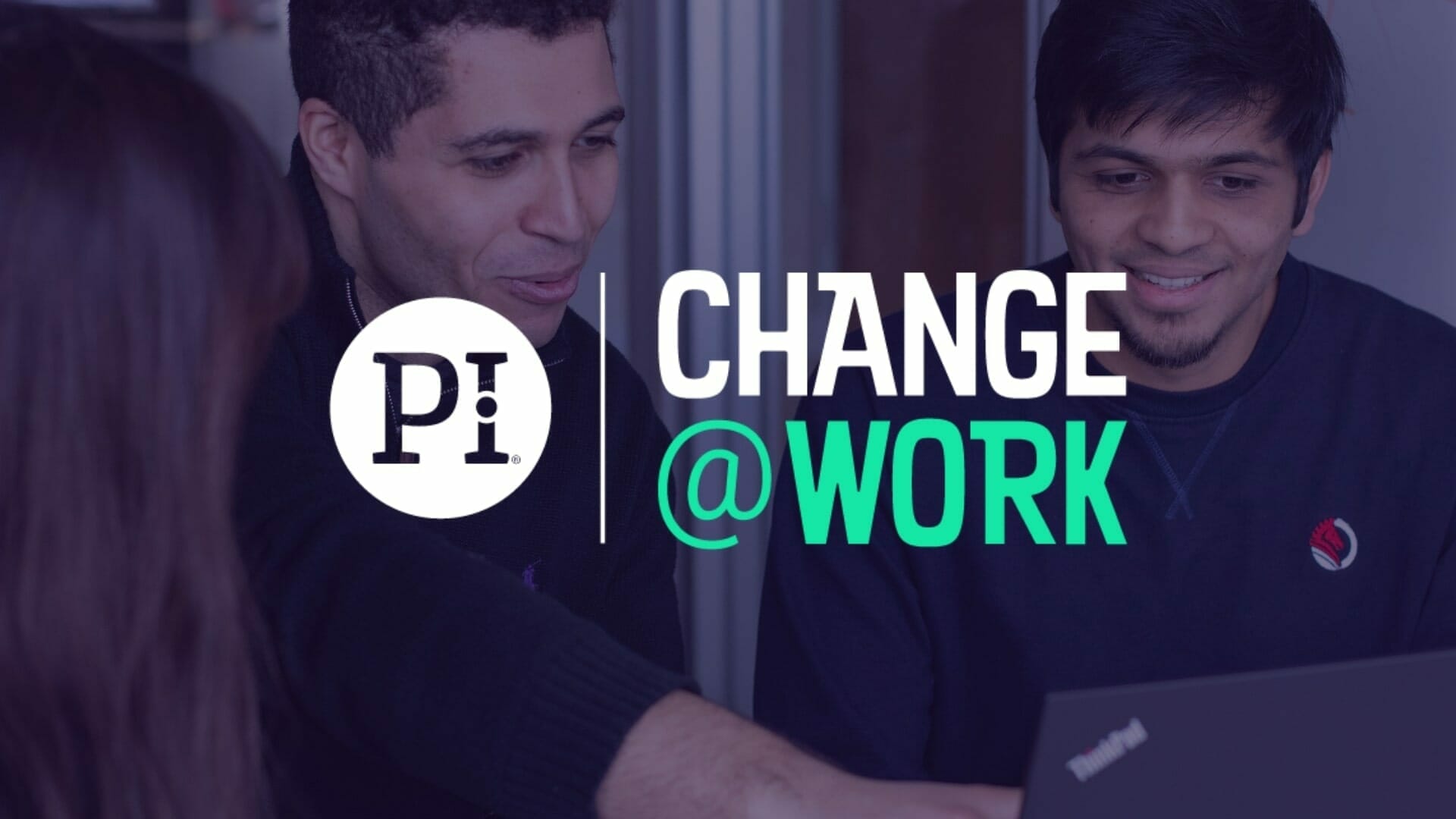May is Mental Health Awareness Month, and here at The Predictive Index, we’re trying to walk the walk. That means applying our stated mission of Better Work, Better World to conversations around self-care and mental health—topics that are often still stigmatized as “non-work” in nature.
We talked a lot about lessons and perspective during the first few months of the COVID-19 pandemic. Some of us even wrote idealistic blog posts about silver linings found amidst the crisis.
As quarantine dragged on and COVID fatigue got real, something cool happened. Those listicles became actual conversations. People opened up. We started re-examining those stigmas because we were dealing with unprecedented uncertainty and anxiety, all while working jobs and caring for our families. We were all dealing with our own version of these feelings, and it felt better to talk through it.
And what do you know? Even as we return to relative normalcy, #mentalhealth and #selfcare are among LinkedIn’s top trending hashtags.
Why mental health matters
We’ve been conditioned to feel that talking about mental health or other life challenges at work is taboo. In reality, talking about what impacts you outside of work can better shape the way you show up at work. It builds trust within your team, strengthens communication and awareness, and helps you deliver on your projects or goals.
But you only get that sort of candor if your organization is built for it. When leaders create a safe space for an individual during their time of need, it allows the team to come together in support. By de-stigmatizing these types of conversations from the top down, you help foster a culture of honesty, cohesion, and engagement.
A recent survey from the Change@Work team resurfaced an old, cold truth: There’s long been a gap between the mental health needs of employees and the resources provided by employers. So we’re starting simply—by listening. Our first Changemakers session on mental health drew nearly a third of the company, and there’s a clear appetite for more.
Self-care isn’t selfish. And it’s with that mentality that some brave PIoneers shared their own experiences and relationships with mental health.

*The following responses have been edited for length, clarity, and anonymity.*
What’s one self-care practice that makes you better at your job?
“Starting my day with movement and proper fuel. Whether it’s an intense cycling session or restorative yoga, moving my body gives me separation from going bed-to-desk. Proper fueling with a delicious breakfast makes me excited for the morning, and powers my brain, too.”
“For me, its remembering to get up and move around during the day. At the office, we’d be running from meeting to meeting, but at home, it’s a lot of sitting. A quick walk outside around the house, eating lunch outside, little things like that have helped keep me energized and feeling less sedentary.”
“Taking breaks and getting outside gives me balance. Especially with remote work, you can get into dangerous rhythms. You might go 12 hours without leaving your house. Employers should promote this sort of balance rather than any sort of grind culture.”
“Practicing the art of scope. When working on a team—especially one you care for and trust—it’s easy to put the group before yourself. And that can create undue pressure. ‘If I don’t get this done by this time, I’ll let someone down! The world might explode!’
Of course, the world won’t explode. The work will still be there when you log on tomorrow. Self-care starts with an understanding that you can support your team while also supporting yourself. Strike the right balance, and it’ll make your work all the more fulfilling.”

What does support for mental health in the workplace look, sound, and feel like?
“Support for mental health at work looks like having resources provided; openness about mental health awareness and struggles; understanding that sick days aren’t just physical needs; and maybe even doing company-wide mental health days once a month or once a quarter.”
“Most organizations are still figuring that out—if they’re talking about it in the first place. But it should look like: open forum discussions about mental health; access to counseling through employer-provided health benefits; resources to help employees better understand and put a name to their personal struggles—and probably a lot more we haven’t even considered yet. If we want to ‘normalize’ mental health awareness, then it needs to be a staple of workplace offerings just like gym memberships.”
“Normalizing conversations around mental health and normalizing the idea behind mental health days. Having wellness-based programs offered through work can also be a great reminder that your employer cares about you and is prioritizing wellness. I worked for a company once that had a therapist that was covered by our insurance who came to the office for appointments. I personally found that incredibly encouraging and that is what made me take the leap to working with a therapist again.”
“It looks like it does at PI, where mental health is recognized as a real thing, and we literally have a company credo and PTO policy that directly reflects that attitude. I’ve had several managers at my time here, and with every one of them, I feel/felt comfortable telling them I needed a mental health day, or that I needed to take a few things off my plate. It’s also my colleagues, who are without fail 100% supportive and always have my back.”
How can managers and leadership offer support?
“Walk the walk. Show us what self-care and wellness look like. Show us what work-life balance looks like. Tell us about your hard day and be vulnerable with your team. Hearing your manager say ‘This has been a really hard week, so I am going to sign-off early tomorrow’ is a great example of this. I am so thankful to have a manager that is open and honest with his feelings and models self-care. My current manager recently said to me: ‘I see you don’t have any time away scheduled. Let’s fix that. What can I do to help?’ This empowers me to take action and know that it is okay to step away for myself.”
“Don’t just talk about self care—model it. Take time off. Talk about your family and how they help you recharge. Show up to a Zoom call sweaty because you just finished a run. Employees see that and appreciate it, and I think we’re going to find that in the future, people aren’t going to want to work at places where self care is not genuinely practiced.”
“Managers and leadership can show what they do to put their mental health first, making it the norm for everyone around them. If leadership takes vacation, everyone else will—same goes for taking care of ourselves. Whether that’s openly speaking about going to therapy, or taking a mental health day every so often, whatever they’re open to speaking about to make it more comfortable for everyone else to do the same.”
“For organizations that promote having aspirational goals, I’d encourage leaders and managers to believe in their employees’ potential, while also resisting the tendency to assume everyone believes their future is full of possibility. Some employees may need more time, practice, and coaching to experience these assumptions as reality. It requires a great deal of trust that others will see them for their talent and personhood, not for society’s stereotypes of them, even if that hasn’t been their experience in other situations.
This trust likely will need to be built incrementally and consistently over time in big and small ways before employees can really take flight with their Big Hairy Audacious Goal. Not everyone has experienced the gift of knowing a future full of possibility, but your investment, time, and mentorship can make a world of difference.”
“Be vulnerable and real. When other people—namely other employees—see the president or founder or whoever acknowledges their own struggles, it grants them the space and approval to do the same without fear of judgment or repercussions.”
How can we be more mindful of people’s unique needs and experiences in these conversations?
“By creating the space. It definitely starts from the top; when a leader is open with me about what’s going on in their lives [to a certain degree], it gives me the space to do the same.”
“PI encourages PIoneers to think aspirationally and strive toward bold goals. Many of our professional development plans include a BHAG—a Big Hairy Audacious Goal—and the actions needed to get there.
For some people, this kind of thinking comes naturally, but it doesn’t for everyone. Having a BHAG assumes a person believes that the future—their future—is full of possibilities. In my experience, having a mental health issue is one of the aspects of life that can make the future seem bleak and even unimaginable. Even after a person recovers (which can be a lifetime journey), a very real, palpable fear can remain, the result of knowing the depths of one’s own darkness.”
“Consider the very real possibility that someone on your team, or in your building, or two time zones away working for your company, is dealing with something massive. And think about how you would show up to work if you were in their shoes. Would you show up as your best self? Mental health awareness and empathy go hand in hand.”

What’s one specific thing you wish people would keep in mind at work?
“You know most of your coworkers on a surface level and don’t know what’s going on in their lives outside of the 9-5. Approach every situation with compassion and leave out assumptions.”
“We all deal with mental health challenges. Some are more profound or visible than others. But to act like these challenges don’t exist is silly at best—inconsiderate and disrespectful at worst. If someone needs surgery on their knee, we grant them time, space, and empathy. Why don’t we do the same for someone working on their mind?”
“Just because someone is bubbly and social, does not mean that they aren’t experiencing mental health struggles. Many of us wear armor to get through the day. Lead with compassion, care, and be mindful that everyone experiences things and work through them differently.”
“Mental Illness, or poor mental health, however you describe it, typically isn’t something you can see. There are no crutches, no casts, no scars. You never really know what someone is going through, and there are a lot of common phrases and sayings out there that can be really hurtful and triggering to someone who’s struggling. Lets be mindful of the words we say, how we communicate with each other, and doe everything we can to be supportive, even if its saying something like, “I don’t know what you’re going through, but I’m here for you.”








